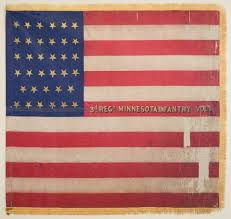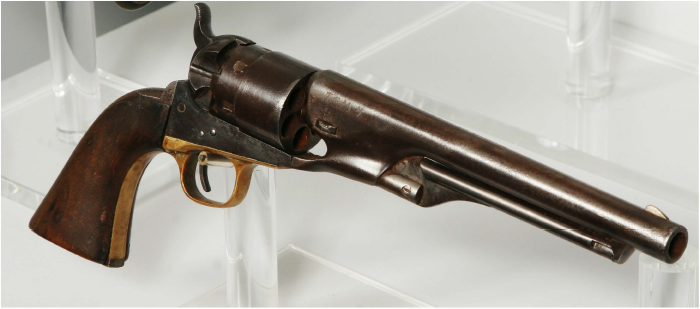Overture
During the early morning hours of July 13, 1862, slumbering members of the 7th Pennsylvania Cavalry were wakened by the sounds of gunfire, galloping horses and yelling rebel cavalrymen. Running out of their tents in their night shirts, their only recourse was to head for the neighboring camp of the 9th Michigan Infantry Regiment. Already awake and alert, the Michiganders, along with members of the 7th, tried to form a hollow infantry square, a common tactic used to repulse cavalry charges. Failing in their formation amidst the chaos, they formed a sturdier defensive line behind a cedar fence in front of the Maney house, just north of Murfreesboro, Tennessee. The charge stalled, but the rebels’ resolve didn’t, especially among the men of Terry’s Texas Rangers.
The Importance of Chattanooga
Railroads were vital in maintaining Confederate armies, especially the Army of Northern Virginia. The East Tennessee & Georgia Railroad supplied Robert E. Lee’s troops with food, munitions and manpower. The Southeast Tennessee town of Chattanooga was a crucial junction on that railroad that must be held. In May 1862, the Union Army of the Ohio, under Major General Don Carlos Buell, was advancing toward Chattanooga from the East. To destroy his supply lines and stall his advance, guerrilla warfare was conducted behind his lines. One Confederate general was more than well-suited for such operations - General Nathan Bedford Forrest.
The Wizard of The Saddle
When it came to fighting, Nathan Bedford Forrest had few, if any, equals. A self-made man, the Tennessee native made a fortune in cotton and the slave trade, enough to recruit and equip his own calvary battalion. At 6 feet, 2 inches with an explosive demeanor, Forrest cut an imposing figure on a battlefield. His command style was simple - fear and respectability! You obeyed his orders or suffered the consequences. Before the end of the war, Forrest killed thirty men in hand-to-hand combat, an astounding number for a Major General. He had no formal military training, but had a flair for tactics. Forrest’s genius was in the use of cavalry as mobile infantry to flank Union lines quickly, disrupt their rear and surround them, usually forcing their surrender. His tactics are used today by the U. S. Army, only they use Humvees and Bradley fighting vehicles instead of horses. “Get there first with the most,” said Forrest. Who better to get there first than the 8th Texas Cavalry - Terry’s Texas Rangers.
Opposing Forces
Forest arrived in Chattanooga on June 11,1862 to a new cavalry command consisting of the 2nd Georgia Cavalry under Colonel J. K. Lawton and Terry’s Texas Rangers under Colonel John H. Wharton. Their target was the garrison and supply depot at Murfreesboro. The garrison, under the command of Brigadier General Thomas L. Crittenden, consisted of a company of the 7th Pennsylvania Cavalry, a Kentucky artillery battery, the 9th Michigan Infantry under Colonel William W. Duffield, and the 3rd Minnesota Infantry under Colonel Henry T. Lester. Three months earlier, the officers of the well disciplined 3rd awarded Lawton a Tiffany sword. Because of a simmering animosity between the 9th and the 3rd, both Union camps were carelessly kept separate, making them vulnerable to a massive cavalry attack.
3rd Minnesota Infantry Flag
Forrest’s Plan of Attack
Forrest set out on July 9, 1862. He stopped at McMinnville for reinforcements and provisions. Two companies of Kentucky infantry and two detachments of Tennessee cavalry were added, bringing the total number of men to 1,400. Scouts and civilian spies kept Forrest informed on the Union camps and locations in Murfreesboro. During the early morning hours of the 13th, the Rangers took out the union pickets outside of town. Forrest divided his command into three groups. The Rangers would attack the 7th Pennsylvania Cavalry and 9th Michigan Infantry camps north of Murfreesboro. Forrest himself would proceed down Woodsbury Pike with the 1st Georgia Cavalry and a detachment of Rangers to capture the courthouse. The 2nd Georgia Cavalry would charge up between the Nashville Pike and the Lebanon Pike to attack the 3rd Minnesota and cut off any contact between the 3rd Minnesota and the 9th Michigan.
Murfreesboro (Rutherford County) Courthouse
Forrest Rides
As the Rangers were routing the Union camps north of Murfreesboro, Forrest raced ahead to secure the town’s courthouse and jail. Inside the jail were 150 political prisoners; local civilians who were arrested for suspected espionage or outright defiance toward Union authorities. The provost guard took positions on the second floor of the courthouse and resisted until Forrest’s men broke through the door and subdued them. The jail was set on fire by a vengeful guard. Fortunately, the prisoners were freed from their cells before the fire could consume them. The Rangers entered the nearby Lyle Hotel, capturing a humiliated General Crittenden. Other officers were rounded up from nearby homes and taverns. The hated provost marshal was found hiding under his wife’s bed.
The Ranger’s attack north of town stalled. Through miscommunication, only a fraction of the Rangers attacked the Union camps, while the rest charged downtown with Forrest and the Georgians. Colonel Wharton was wounded and replaced by Colonel Thomas Harrison. The 9th Michigan’s Colonel Duffield was severely wounded and taken inside the Maney House. His replacement, Lt. Colonel John G. Pankhurst, fortified the 9th’s line with overturned wagons and bales of hay. The outnumbered Rangers kept Pankhurst’s men pinned down with rifle fire.
The attack on the 3rd Minnesota’s camp proved a tougher nut to crack until Forrest personally led a charge after the first two failed, flanking the Union line and capturing their camp. Having surrounded the 3rd, Forrest ordered his men to keep them pinned down. When Forrest’s officers suggested he had done enough and should break off the attack, he replied angrily, “I did not come here to make half a job of it. I mean to have them all.” Forrest mounted his horse and galloped over to the Rangers position near the 9th Michigan’s line. It was there, Forrest applied another tactic he became famous for-deception. Under a flag of truce, Pankhurst received a demand to surrender or be put to the sword. According to Ranger Captain J. K. P. Blackburn, Forrest added to the threat with “If you refuse I will charge you with the Texas Rangers under the black flag.” Forrest’s cleverly backed his threat by having his cavalry ride in a continuous loop around the town, giving the illusion to Pankhurst that an overwhelming force was about to storm his position. After conferring with the wounded Duffield, Parkhurst surrendered his command. Forrest applied the same tactic on the 3rd Minnesota - surrender or else. Surrounded and cut off from their camp, they too surrendered.
Aftermath
By mid-afternoon, Forrest had captured the entire Murfreesboro garrison. The total haul was 1,200 prisoners, a quarter of a million dollars worth of supplies, an artillery battery, and fifty wagons, teams included. Confederate casualties were 65 to 85 men. More important, Buell’s advance was stalled. Fearing a Confederate attack on their base at Nashville, Union troops, to be used against Chattanooga, were dispatched to Nashville instead. Forest and the Rangers had made the ideal pairing.















